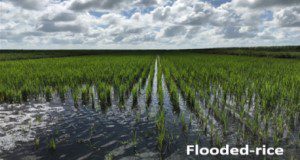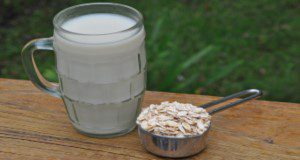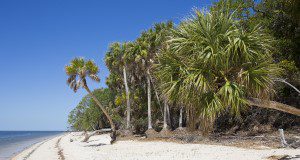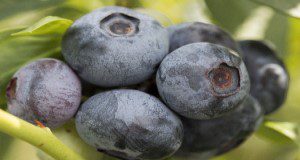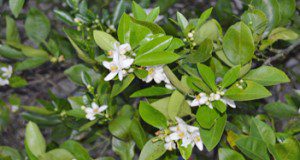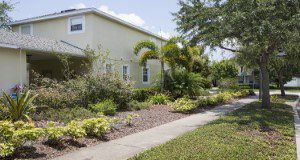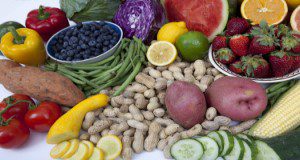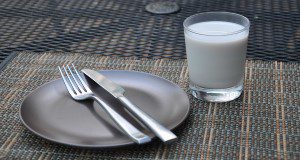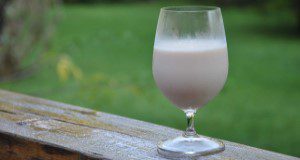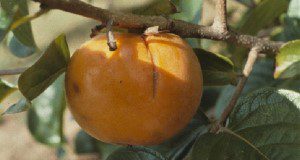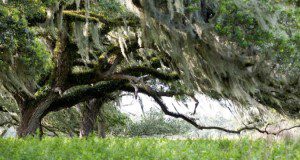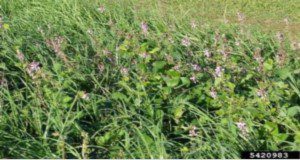This first publication in the Road to Recovery series provides a brief introduction to some core concerns and considerations for Extension professionals as they adapt their outreach, education, and evaluation efforts during a pandemic and recovery. This new 3-page publication of the UF/IFAS Department of Agricultural Education and Communication also includes an overview of the subsequent articles in the Road to Recovery series. Written by Cody Gusto, Colby Silvert, and John Diaz.
https://edis.ifas.ufl.edu/wc379
Author: Paul Roberts
Downy Mildew of Lettuce in Florida
Lettuce Downy Mildew (LDM), caused by the oomycete Bremia lactucae, is the most important disease of lettuce worldwide. LDM has a direct effect on both yield quantity and quality because it may infect lettuce at any growth stage, affecting the marketable portion of the crop. This new 6-page publication of the UF/IFAS Horticultural Sciences Department introduces the LDM disease in Florida lettuce and available control methods and strategies. This publication also introduces the work on LDM in the UF/IFAS Lettuce Breeding Program, which was created to release cultivars adapted to Florida conditions. Written by Lis Rodrigues-Porto, Richard N. Raid, and Germán V. Sandoya.
https://edis.ifas.ufl.edu/hs1403
Use of Recycled Potting Medium for Containerized Production of Squash
Vegetable growers are keen on cost-cutting measures to increase profitability. Containerized vegetable production can be done in a shade-house or garden, and it often requires commercial potting media. Although expensive, potting media are lightweight and provide high water- and nutrient-holding capacities, and thus they are widely used by growers. Growers often discard or compost the potting media after a single season due to issues such as diseases, pests, and weeds. However, old potting media could be reused for containerized production if appropriately sterilized and amended with fertilizer salts. The current study was conducted to determine the feasibility of using sterilized recycled potting medium amended with fertilizer salts for containerized production of squash. This new 4-page publication of the UF/IFAS Horticultural Sciences Department was written by Marie Dorval, Riphine Mainviel, Vincent Michael, Yuqing Fu, Bala Rathinasabapathi, and Geoffrey Meru.
https://edis.ifas.ufl.edu/hs1404
Stormwater Pond Management: What You Need to Know about Aeration
This new 6-page document is intended to provide Floridians and their communities with information on a specific management practice in stormwater ponds: the use of fountains and other aeration approaches. These practices may provide opportunities both to improve water quality within the pond and protect downstream water quality. Specifically, this document gives basic information on fountains and the pros and cons of fountain installation and use. In addition, we provide information for pond managers or community decision makers on how to best manage ponds for effective pollutant removal in the pond and downstream water quality protection. Written by Samantha T. Howley, Steven P. Hohman, and Alexander J. Reisinger, and published by the UF/IFAS Department of Soil and Water Sciences.
https://edis.ifas.ufl.edu/ss695
Soil Health Response of Histosols to Flooded versus Dry-Fallow Conditions during Summer
Evaluating changes in soil properties associated with flooded fields during the summer months in the Everglades Agricultural Area (EAA) provides us an opportunity to assess the effect of soil management associated with flooded versus dry-fallow field conditions on Histosols. This information will be beneficial to current and potential growers farming flooded rice in south Florida, as well as Extension agents who work on rice and soil conservation agencies such as the USDA Natural Resources Conservation Service (NRCS). This new 6-page publication was written by Jehangir H. Bhadha, Jay Capasso, Abul Rabbany, Nan Xu, and Matthew VanWeelden, and published by the UF/IFAS Department of Soil and Water Sciences.
https://edis.ifas.ufl.edu/ss697
Leches a base de plantas: Avena
La leche de avena es una de las alternativas lácteas más recientes en llegar a los estantes de los supermercados, y actualmente hay varias marcas disponibles en los Estados Unidos. La leche de avena está hecha de avena en grano. Esta publicación describe cómo se elabora la leche de avena, sus ingredientes y perfil de nutrientes, y los posibles beneficios y riesgos para la salud del consumo.
This new 4-page publication of the UF/IFAS Food Science and Human Nutrition Department is the Spanish translation of FSHN20-52/FS419, Plant-Based Milks: Oat, written by Hannah Cooper, Daniela Rivero-Mendoza, and Wendy J. Dahl.
https://edis.ifas.ufl.edu/fs427
Lightning Damage to Landscape Palms
Florida is considered by some to be the lightning capital of the world. Florida has on average 3,500 cloud-to-ground lightning strikes per day and 1.2 million strikes per year. Given so many strikes, the probability of damage to certain palms is significant. Coconut palms, royal palms, and Washington palms are particularly vulnerable due to their great heights, but other tall palms may be equally susceptible. This new 6-page publication of the UF/IFAS Environmental Horticulture Department describes and includes many helpful photos of symptoms of lightning damage as well as lightning protection systems. Written by Stephen H. Brown, Douglas Caldwell, and Ralph Mitchell.
https://edis.ifas.ufl.edu/ep598
Organic Blueberry Production in Florida
There is a growing market in the United States and globally for fresh fruits and vegetables with reported health-enhancing properties. This includes blueberries, which are high in antioxidants and have been reported to improve heart health and contain anticancer properties. Fresh-market blueberry sales (conventional and organic) increased by 27% between 2013 and 2017, and that trend is expected to continue. In addition, there is an increasing level of consumer interest in organically grown produce (for environmental conservation, taste, and other perceived benefits), for which some consumers are willing to pay a premium over the price for a conventionally produced crop. This new 8-page publication of the UF/IFAS Horticultural Sciences Department discusses various aspects of organic blueberry production in Florida and is intended for use by those currently using or interested in pursuing organic production. Written by Douglas A. Phillips, Peter J. Dittmar, Philip F. Harmon, Oscar E. Liburd, Danielle D. Treadwell, and Jeffrey G. Williamson.
https://edis.ifas.ufl.edu/hs1400
Chinese Mustard Cultivation Guide for Florida
Chinese mustard is a nutritious leafy vegetable in the family Brassicaceae. Chinese mustard also goes by many common names, such as brown mustard, mustard greens, leaf mustard, Indian mustard, Oriental mustard, and vegetable mustard. Although it is considered a weed in a few states, such as Michigan, this species is not listed as invasive in Florida and has been cultivated in several counties, including Levy, Palm Beach, and Miami-Dade. This new 8-page publication of the UF/IFAS Horticultural Sciences Department provides a short cultivation guide as well as information on the uses and marketability of Chinese mustard. Written by Yuheng Qiu, Mary Dixon, and Guodong Liu.
https://edis.ifas.ufl.edu/hs1402
Management Options for Improving Flowering in Citrus Production
The final fruit yield and, ultimately, returns a grower receives from any given harvest is directly related to the number of viable flowers that are generated and the proportion of those flowers that produce fruit. A grower can improve the ability for their trees to consistently produce a profitable crop of fruit by understanding the steps involved in flowering and controlling the transition to reproductive growth. This new 6-page publication of the UF/IFAS Horticultural Sciences Department was written by Leigh Archer, Miurel Brewer, Bikash Adhikari, Eduardo Esteves, Christopher Vincent, and Tripti Vashisth.
https://edis.ifas.ufl.edu/hs1399
Developing Extension Programming to Help Low-Income Families Save Money and Energy: The Community Weatherization Coalition Model
This new 3-page publication of the Department of Agricultural Education and Communication is the first in a series that will help Extension agents, nonprofits, agency personnel, and other promoters of community development better understand both the issue of high utility bills among low-income residents and what they can do to help. This first publication provides an overview of one program approach taken by a group of volunteers in Alachua County, the Community Weatherization Coalition, which uses a model of trained “energy coaches.” Written by Paul Monaghan, Sarah Blucher, Marianne Schmink, Alane Humrich, Jennison Kipp, and Wendell Porter.
https://edis.ifas.ufl.edu/wc368
Exemplary Youth Leadership Series: Encourage the Heart
This publication series is designed to outline strategies and experiences to expose youth to and engage them with leadership concepts. In this publication, students will try on aspects of the final practice of exemplary leaders: encouraging the heart. Two quick, low-cost activities are included for implementation with youth and adults working with youth. These activities are best suited for students ages 10–18. However, modifications are included for each of the activities to allow for different group sizes, ages, and abilities of the youth participating. This new 2-page publication of the UF/IFAS Department of Agricultural Education and Communication was written by Megan Stein.
https://edis.ifas.ufl.edu/wc377
Reducing Your Risk for Heart Disease: The Power of Food
Heart disease is the #1 cause of death among men and women within the United States. Heart disease is an umbrella term for the following heart conditions: angina; irregular heartbeats; heart attacks; heart failure; and stroke. This new 8-page publication of the UF/IFAS Food Science and Human Nutrition Department describes the modifiable risk factors for heart disease and tips to reduce one’s risk for heart disease. Written by Elena B. Smith, Jodi Fitzgerald, Danielle Nelson, Madison Woodard, and Jeanette Andrade.
https://edis.ifas.ufl.edu/fs426
Leches a base de plantas: Almendras
La leche de almendras, una alternativa a la leche de origen vegetal, se produce a partir de almendras y agua. La leche de almendras tiene su origen en la región mediterránea y se consume desde hace muchos años. En los Estados Unidos, hay varias marcas comercializadas de leche de almendras. Esta publicación describe el perfil de nutrientes y los posibles beneficios y riesgos para la salud de la leche de almendras.
This new 3-page publication of the UF/IFAS Food Science and Human Nutrition Department is the Spanish version of FSHN20-48/FS410, Plant-Based Milks: Almond. Written by Elena Torna, Daniela Rivero Mendoza, and Wendy J. Dahl.
https://edis.ifas.ufl.edu/fs423
Plant-Based Milks: Soy
Soy milk is a plant-based milk made from the legume soybean. Unlike some of the recently marketed plant-based milks, soy milk has a long history as a beverage around the world and has been marketed in the United States for more than a century. If you have wondered how it compares to cow’s milk, this new 5-page publication of the UF/IFAS Food Science and Human Nutrition Department describes the composition and nutrient content of soy milk and its potential benefits and risks to health. Written by Jessica Goldberg, Daniela Rivero-Mendoza, and Wendy J. Dahl.
https://edis.ifas.ufl.edu/fs422
Prácticas Culturales para el Caqui Japonés en Florida
Los caquis son considerados como un cultivo relativamente sostenible en Florida, con una calificación de 6 puntos en una escala de 10 para la evaluación de sostenibilidad agrícola. Los caquis tienen un potencial comercial moderado y altas probabilidades de llegar directamente al consumidor. La demanda de los consumidores podría ser de cultivares no astringentes principalmente. Los caquis son aptos para el centro y el norte de Florida, ya que la calidad y los rendimientos pueden ser bajos en la parte sur del estado.
This new 15-page publication of the UF/IFAS Horticultural Sciences Department is the Spanish translation of HS1389, Japanese Persimmon Cultural Practices in Florida, written by Ali Sarkhosh, Dustin M. Huff, and Peter C. Andersen, and translated by Jonathan Clavijo-Herrera.
https://edis.ifas.ufl.edu/hs1401
Bird’s Nest Fungi: Charismatic Mushrooms in Your Garden
The “bird’s nest” fungi (Nidulariaceae) are charismatic mushrooms that look like small nests containing multiple tiny eggs. Because the ecological role of bird’s nest fungi is to decompose wood, they are extremely common in disturbed areas with plant debris and mulch, such as trails and backyard gardens. These fungi tend to grow in large clusters, so it is common to see ten to a hundred of these “nests” at once. Bird’s nest fungi are not considered dangerous to plants, animals, or humans. This new 3-page publication of the UF/IFAS Plant Pathology Department was written by Nattapol Kraisitudomsook and Matthew E. Smith.
https://edis.ifas.ufl.edu/pp361
Key Plant, Key Pests: Oak (Quercus spp.)
This series of Key Plant, Key Pests publications is designed for Florida gardeners, horticulturalists, and landscape professionals to help identify common pests associated with common Florida flora. This new 9-page publication provides information and general management recommendations for borers, caterpillars, insect-induced galls, twig girdlers, oak leaf blister, root and butt rot, Tubakia leaf spot, mistletoe, psocids, lace bugs, woolly aphids, powdery mildew, Spanish and ball moss, and lichens. Written by Juanita Popenoe, Caroline R. Warwick, Adam G. Dale, and Alfred Huo, and published by the UF/IFAS Environmental Horticulture Department.
https://edis.ifas.ufl.edu/ep596
Biology and Management of Creeping Beggarweed (Desmodium incanum) in Warm-Season Turf
Creeping beggarweed is a common perennial broadleaf weed in Florida landscapes, home gardens, pastures, and other agricultural production systems. This new 6-page article is written for green industry professionals and others to help aid in the identification and management of creeping beggarweed in landscape turf and planting beds. Written by Grantly Ricketts and Chris Marble, and published by the UF/IFAS Environmental Horticulture Department.
https://edis.ifas.ufl.edu/ep591
Sampling Guidelines and Recommendations for Submitting Samples for Diagnosing Laurel Wilt in Avocado Trees (Persea americana L.)
Laurel wilt (LW) is a vascular disease caused by a fungal pathogen transmitted to avocado trees by several ambrosia beetle species and through root grafts among adjacent avocado trees. A critical part of preventing and controlling plant diseases is determining the causal agent so that the appropriate management practices can be implemented to eradicate or contain the outbreak. Proper sampling is a critical step in disease diagnosis and in the determination of the causal agent of disease. This new 3-page publication of the UF/IFAS Horticultural Sciences Department was written by Jonathan Crane, Romina Gazis, Jeff Wasielewski, Daniel Carrillo, Bruce Schaffer, Fredy Ballen, and Edward Evans.
https://edis.ifas.ufl.edu/hs1394




